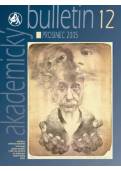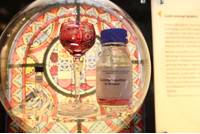
Academic bulletin 12/2005
SUMMARY
EVENT
Science and Technology is More and More popular
"Week of Science and Technology 2005", organized by the Academy of Science and its partners in early November, attracted more than 12,000 people, primarily secondary school students from Prague, Brno and České Budějovice. They came to take part in lectures mostly devoted to physics (this being The World Year of Physics), in roundtable discussion in the building of the Academy on Narodní Street in Prague, an exposition in Národní technické museum or exhibition in Club Roxy in Prague. Hundreds of other people visited individual institutes of the Academy of Sciences, which also opened their doors to the public.
SCIENCE AND RESEARCH
Energy for the 21st century
Do we really stand on the threshold
of thermonuclear era?
An interview with Dr. Jan Mlynář of the Institute of Plasma Physics, ASCR, about the project ITER and controlled thermonuclear fusion on Earth. The conference, devoted to the topic of Energy for 21st Century, took place on 24th October 2005 in
the building of Academia and was organized with the cooperation of the Institute of Plasma Physics, ASCR, and the ASCR’s Press Department.
INTERVIEW
From Orlicko to Region
Representatives of the Czech Academy of Sciences met at Villa Lanna with representatives of the Association of Municipalities of the Orlicko Region. Academic Bulletin did an interview with Ing. František Dittrt of the Institute of Hydrobiology, ASCR.
TOPIC OF THE MONTH
The trail of the Martinická Bible
The Latin Bible known as Martinická originated in the thirties of the 15th Century. Its 434 pages were written on Pergamon in two columns. The Bible contains 55 calalligraphic and 108 painted initials. Since 19th September 2005 and until the 3rd of January 2006, the exhibition is at the Metropolitan Museum of Art in New York. The exposition is titled Prague, The Crown of Bohemia, 1347–1437.
NEWS FROM THE ACADEMIC COUNCIL
A summary on the 9th session of the Academic Council of the Academy of Sciences of the Czech Republic.
RESEARCH AND DEVELOPMNENT COUNCIL OF THE GOVERNMENT OF THE CZECH REPUBLIC
A report of the 207th session of the Czech Government’s Research and Development Council.
AWARDS
Desire to know yet unknown
The Paul Janssen Endowment Fund has awarded Prizes of 2005 at the Karolinum. Prof. Eva Syková from the Institute of Experimental Medicine, ASCR, received the Haskovcova Prize in Neurology for her work, Diffusion properties of the brain in health and disease.
2005 Czech Head award
The Czech Head awards have been presented for the fourth year in a row. The organisers seek to support scientists and researchers, popularise science and enhance the prestige of Czech scientific experts in society. This year the award was presented by the government for the first time.
INTRODUCING PROJECTS
Heracleum mantegazzianum, the largest herb in Central Europe
The Institute of Botany, ASCR, has undertaken one of the most significant of its projects called the Giant Alien. It is focusing on research of the Heracleum mantegazzianum, the largest herb in Central Europe that rapidly attains dominance, with up to 40 percent of suitable habitats covered by stands of this species in the area of Slavkovský Forest. Replacement of native vegetation and injuries to human skin caused by phototoxic substances are the main reasons for attempting to eradicate it.


 Česky
Česky













